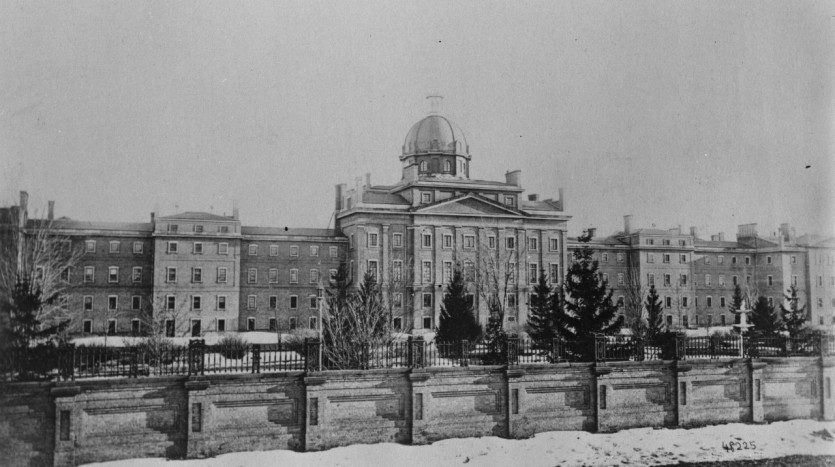
“We tend not to think of buildings as being obsolete,” says Michael McClelland, founding principal of ERA Architects, a firm well known in Toronto for its architectural heritage-conservation work. “We think of them as being opportunities for adaptive re-use,” he adds. But McClelland notes this hasn’t always been the popular view among Torontonians. “We’ve lost some significant buildings,” he acknowledges. Here are four of the most important examples of Toronto architecture to meet the wrecking ball, according to McClelland.
Provincial Lunatic Asylum (1850-1975)
“The original building was by John Howard, and it was a bit like the old Don Jail. But it was an absolutely amazing piece of architecture,” says McClelland of the sprawling psychiatric hospital that occupied what today is the 999 Queen West site of the Centre for Addiction and Mental Health. “It was just the masses’ construction—a very interesting building,” he says, explaining what was so special about it. “John Howard is probably the most interesting 19th-century architect we had in Canada—in Toronto—and very little of his work remains,” McClelland adds. He notes an exception: the old Colborne Lodge, Howard’s High Park home at 11 Colborne Lodge Dr. that dates back to 1836.
The Union Carbide Building (1960-1999)
“Union Carbide was a really sleek modernist building and a really good example of a really remarkable curtain wall,” notes McClelland, highlighting its stylized façade. “It was an early… elegant example,” he adds. McClelland bemoans the late-‘90s loss of the 11-floor office building that once stood at 123 Eglinton Ave. E. “I think it was replaced by a really pudgy condo building which doesn’t have anywhere near the same quality architecturally.” In fact, after it was razed, Eglinton Place condos took its place.
The Temple Building (1896-1970)
Dubbed “Toronto’s first skyscraper” by local news outlet Torontoist, the Temple Building towered 12 storeys tall at 62 Richmond St. W. near Bay Street. Reportedly, it was unmatched in height anywhere in the British Empire for a time. “The Temple Building was this amazing Romanesque building that was a real landmark on Bay Street,” notes McClelland. “It was a very major building [and] beautifully detailed,” he adds. In terms of its level of architecture, McClelland mentions it in the same breath as Toronto’s Old City Hall, which managed to evade the wrecking ball, a fate The Temple building met in 1970.
William H. Wright Building (1937-1974)
“There were a lot of head offices downtown, and a number of those have been lost. I think the Globe & Mail’s is pretty much the most interesting of the lot of them,” says McClelland. Why is that? “Well, the details—the detailing,” the architect replies.
McClelland isn’t the only one to show appreciation for the one-time home of Canada’s national newspaper. The six-storey midrise appeared in Smart Address: Art Deco, Style Moderne and Their Contemporaries in Toronto, a 2013-14 photo exhibit at Toronto’s Market Gallery.

